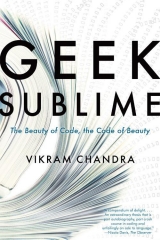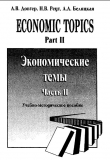
Текст книги "Geek Sublime: The Beauty of Code, the Code of Beauty"
Автор книги: Vikram Chandra
Жанры:
Современная проза
,сообщить о нарушении
Текущая страница: 5 (всего у книги 15 страниц)
Parents want their daughters to work in computing in particular and scientific disciplines in general, and support and cajole and push toward this end.
In India, the logical nature of work in computing, its abstraction and headiness, is precisely what makes the field a kind of haven from all the indignities and horrific cruelties that subcontinental culture inflicts on women elsewhere:
For Indian women, being indoors in an office in front of a computer means they are protected from the outside environment, which is seen as unfriendly to women. Construction sites and factories are the work sites where a degree in other engineering fields, such as mechanical or civil, are seen as more suited for men. 72
Sexism of the most ugly and violent kind exists in the environments that these women must negotiate away from the computer, but knowledge itself is not gendered as male:
[Indian] women do not feel that teachers neglect them in mathematics and computing classes. This is one of the reasons that these fields do not emerge as a male domain. From early on, female students are taught to invest in hard work, which is seen to solve scientific and technical problems and, thus, a requirement to succeed in life. 73
The outlook for these Indian women is not altogether rosy, however. Alok Aggarwal is co-founder and chairman of Evalueserve India, a research and analytics company that employs approximately 2,000 people, out of which 30 percent are women. He told me:
We believe that currently in most IT companies (IBM India, Accenture India, Infosys, Wipro, TCS, HCL, Cognizant, iGate, etc.), the percentage of women is also 30 % [in the category of] “computer programmers.” However, unfortunately, at the managerial level, both within our company, Evalueserve, and the other IT companies mentioned above, the percentage of women managers drops to approximately 10 %. 74
In terms of the retention of employees, Aggarwal adds, “Among new joinees, 35 % are women but within five years, this number comes down to 25 % (because some of the women who get married leave Evalueserve India or the work-force altogether – at least on a temporary basis).” 75Cultural narratives about domesticity, children, and the exercise of power outside the home are still very much in place.
Still, research in countries as varied as Iran, Hong Kong, Mauritius, Taiwan, and Malaysia has yielded results consistent with those found in studies in India, showing that there is nothing about the field of computing that makes it inherently male. Varma’s conclusion is blunt: “The gender imbalance in the United States seems to be specific to the country; it is not a universal phenomenon, as it has been presented in the scholarly literature.” 76

In her book Delusions of Gender: How Our Minds, Society, and Neurosexism Create Difference, Cordelia Fine observes that “in prosperous countries it is not economic prosperity that tracks sex segregation in degree choices, but differences in adolescent boys’ and girls’ attitudes toward math and science. In richer countries, the greater the difference between boys’ and girls’ interest in science and math, the greater the sex segregation.” 77
Fine also cites studies of the participation of American girls in the prestigious International Math Olympiad (IMO), where profoundly gifted mathematical whiz kids spend nine hours solving extremely difficult problems:
If you’re Hispanic, African American, or Native American, it matters not whether you have two X chromosomes or one – you might as well give up now on any dreams of sweating for nine hours over some proofs. Then within girls, interesting patterns emerge. Asian American girls are not underrepresented, relative to their numbers in the population. But that doesn’t mean that it’s even simply a white girlproblem. Non-Hispanic white girls born in North America are sorely underrepresented: there are about twenty times fewer of them on IMO teams than you’d expect based on their numbers in the population, and they virtually never attend the highly selective MOSP [Mathematical Olympiad Summer Program]. But this isn’t the case for non-Hispanic white girls who were born in Europe, immigrants from countries like Romania, Russia, and the Ukraine, who manage on the whole to keep their end up when it comes to participating in these prestigious competitions and programs. The success of this group of women continues into their careers. These women are a hundred times more likelyto make it into the math faculty of Harvard, MIT, Princeton, Stanford, or University of California – Berkeley than their native-born white counterparts. They do every bit as well as white males, relative to their numbers in the population. 78
A hundred times more likely—emphasis doubly mine and in the original – would seem to indicate that within the American idiom of personhood, power, desire, and meaning, there is a figuring of mathematics as male, something that “Non-Hispanic white girls” should keep away from. Something similar seems to be true of programming in America, which is marked by a particular machismo that idealizes un-socialized, high-school-outcast geekery; coding excellence earned through solitary, singular focus; and adult programmer-bro success signaled by aggression.
So within this American landscape, on this new frontier, how do those who are not “cool” (or belong to the wrong gender) succeed? N. Sivakumar, the immigrant programmer who was warned about shabbiness, tried to learn coolitude: “All right, I am going to walk straight and smart as of tomorrow!” But his colleagues now teased him for walking like “President Bush,” and so he decided, “I better be me!” 79But being himself and succeeding required that he work very, very hard, and adopt certain strategies:
Indians learn for survival whereas most Americans tend to choose their career for passion. Indians learn everything …
Indian programmers have a habit of saying “yes” to everything. Again, it’s all about survival. They will say “Yes” to move to North Dakota tomorrow. Say “Yes” to work for someone who used to work for him. “Yes” to long hours. “Yes” to program in a completely new language (which they will starve to learn within days) …
Indian programmers are also tolerant enough to do the “shit” work. That is: going through somebody else’s code. This is one of the toughest challenges for any programmer …
Almost all the so-called “software maintenance” projects … were handled by Indian programmers …
This is what Indian programmers do and are patient enough to handle. Patience – a unique quality of Indians. 80
N. Sivakumar is careful to qualify his assertions; he’s not saying that every Indian programmer is preternaturally patient and a paragon of hard work: “My comparisons … always focus on the average programmer … There will always be a good and a bad and an ugly in every bunch.” He adds:
An Indian programmer will most probably stop learning once he gets a job … Indian programmers are least likely to learn something new on their own – in their field of interest – to enhance their knowledge if not required. In other words, they lack initiative once they are settled and once they feel safe. 81
And finally:
Average American programmers are more innovative than their counterparts. I know my Indian and Chinese friends will disagree with me on this, but this is the truth. Although an average American programmer’s knowledge is limited to a certain technology or a programming language, they master the hell out of that, and have a higher probability of innovating something new in their area. Average Indian and Chinese programmers, on the other hand, tend to be all over the place and are least likely to innovate something new in their specific area. 82
In reference to the success of Indians in Silicon Valley, the tech entrepreneur and academic Vivek Wadhwa credits efficient and ceaseless networking:
The first few [company founders] who cracked the glass ceiling had open discussions about the hurdles they had faced.
They agreed that the key to uplifting their community, and fostering more entrepreneurship in general, was to teach and mentor the next generation of entrepreneurs.
They formed networking organizations to teach others about starting businesses, and to bring people together. These organizations helped to mobilize the information, knowhow, skill, and capital needed to start technology companies …
The first generation of successful entrepreneurs – people like Sun Microsystems co-founder Vinod Khosla – served as visible, vocal, role models and mentors. They also provided seed funding to members of their community. 83
These efforts were successful enough that the denizens of Silicon Valley sometimes refer to these networks, with decidedly mixed admiration and resentment, as the “Indian Mafia.” 84
The resentment curdles and boils over in discussions of outsourcing. Since the nineties, American companies have gained commercial advantage by leveraging the new landscape of instant communication made possible by the internet and the disparities in programmer salaries around the globe. If you can manage employees via e-mail and Skype, it makes economic sense to have your code written in Bangalore rather than next door, and pay a fraction of the salary that a programmer living in San Jose would demand. American programmers have watched with mounting fear and fury as work has been outsourced; meanwhile, in India, the demand for competent programmers has steadily driven wages up. On American websites frequented by programmers, stories about horrible, ugly code written by Indian coders function as reliable linkbait. The ensuing discussions speedily descend into outright racism (’code coolies’) and nationalist chest-thumping (’go look for all the Indian names on the Google corporate masthead’). It is certainly true that Indian consulting companies struggling to keep up with the demand from overseas have hired battalions of Indian Morts, who have written some truly awful code, although I doubt that it’s any worse than code written by American Morts. The corporate imperative toward cost-cutting – on both sides of the globe – results in shoddy products, in programming as in any other industrialized field. And the Indian Einsteins, until fairly recently, have gravitated inevitably toward Silicon Valley, often snapped up directly from Indian campuses by American recruiters. There, they have formed the core of the Indian Mafia.
So this is another history of success in Silicon Valley that may be placed beside the more familiar narrative of solitary, pioneering heroes who seem to have sprung from an Ayn Rand novel – in this Indian-American version we have a tenacious patience, learned in a country with sparse resources and endless competition, a perseverance trained and honed by a thousand endless queues in government offices; a willingness to work at “shiz” scorned by people conditioned by a less straitened environment; cooperation and mutual help; and a huge, continuing financial investment by a young nation state, despite the paradoxes of unequal development and the flight of intellectual capital. This alternate narrative of technology should remind us that there are always many pasts, some hidden in plain sight.

The fictions about history that form the Frontier Myth, the stories that the Gunfighter Nation tells itself, typically present women as dauntless housewives or prostitutes (with the requisite hearts of gold). In either case, they are the backdrop, they inhabit the fragile outposts of civilization (the parlor, the schoolhouse, the saloon) on whose behalf the silent hero enacts his all-important rituals of violence out on the mesa. Men do the thinking and planning, women provide – as it were – the clerical support. Much scholarship since the seventies – the New Western History – has unearthed the complex roles women played on the frontier, their essential and irreplaceable contributions to the logistics and politics of the westward expansion. Notwithstanding revisionist historians and filmmakers, the power of the Frontier Myth, its meaning-making about nation and personhood, its celebrations of regeneration through confrontations with savagery and the wilderness – all this remains intact, as one can see on television shows and hear in the speeches of politicians.
The mythology of computing similarly celebrates the victories of its male protagonists and erases women from the record, and not just programmers. The programmer Jaron Lanier tells us that in the early days of Silicon Valley
there were … extraordinary female figures who served as the impresarios of social networking before there was an internet. It still seems wrong to name them, because it isn’t clear if I would be talking about their private lives or their public contributions: I don’t know how to draw a line.
These irresistible creatures would sometimes date alpha nerds, but mostly brought the act of socialising into a society where it probably would not have occurred otherwise. A handful of them had an extraordinary, often unpaid degree of influence over what research was done, which companies came to be, who worked at them and what products were developed.
That they are usually undescribed in histories of Silicon Valley is just another instance of what a fiction history can be. 85
Silicon Valley may have in reality needed Lanier’s salonnières and the Indian Mafia, but its heroic narrative – from which it draws its ambition, its adventurousness, and its seductiveness – requires lone American cowboys to ride the range.
Toward the end of their critique of the Californian Ideology, Barbrook and Cameron remark in passing, “Any attempt to develop hypermedia [innovative forms of knowledge and communications] within Europe will need some of the entrepreneurial zeal and can-do attitude championed by the Californian New Right.” But it seems to me that you cannot get the can-do attitude and zeal without the ideology, without the shimmering dream of California, without the furious continent-conquering energy, the guns, the massacres, without the consequences – good andbad – of belief. Fictions about history are not just distractions; they move individuals and nations into action, and so they change history itself.
5 THE CODE OF BEAUTY: ANANDAVARDHANA
About four years into the writing of my own fiction about history, I traveled to New York over a summer break. I wanted to see friends, to do some computer work for my old scribing company, and also to escape my novel for a few weeks. This was my first book, but by now I had learned that when you are in the middle of a novel, you cannot escape the writing except through distraction. The story buzzes and hums inside you, and any moment of rest gives it an opportunity to scrabble to the surface and claw at your attention. New York was full of diversions. And being away from my papers and books meant that I couldn’t really work, so I could indulge freely.
One evening, a friend told me about a reading by five touring Indian poets at the Museum of Modern Art (MoMA). We went, and I heard the critic and poet A. K. Ramanujan read his translation of a classical Tamil poem:
What could my mother be
to yours? What kin is my father
to yours anyway? And how
did you and I meet ever?
But in love
our hearts have mingled
like red earth and pouring rain. 1
I felt a shiver of recognition. I had been scribbling titles in my notebooks for years, but now I knew. This was what my book would be called. I went to a library the next day and found Ramanujan’s book The Interior Landscape.The poem had been written some time between the first and third centuries CE by a poet known only as Cempulappeyanirar, “The Poet of the Red Earth and Pouring Rain.” It lost none of its simple, evocative vastness when I read it on a page, and I was grateful, but a title was not the only richness that Ramanujan offered me. In his elegant afterword, he led the reader into the intricacies of the Sangam literature of south India, which flourished from about 300 BCE to 30 °CE. “Sangam” is “confluence” in Tamil, and refers to the assemblies of scholars and poets who – according to legend – had met for thousands of years in the south. The Sangam poets divided the world into akam—Ramanujan’s “interior landscape,” suffused with the pleasures and pains of love, sex, and attachment – and puram—the external panorama of politics, heroic striving, social attachment and obligation. In these poems, a complex series of symbolic associations creates mood and meaning; each flower and landscape functions within a convention. So, the desert or drought-ridden land of the palaiis where lovers part; the kurinjiflower, which blooms only once every twelve years, gives its name to the landscape of the hills, abundant with water and fruit, alive with desire. “In their antiquity and in their contemporaneity, there is not much else in any Indian literature equal to these quiet and dramatic Tamil poems,” Ramanujan wrote. “In their values and stances, they represent a mature classical poetry: passion is balanced by courtesy, transparency by ironies and nuances of design, impersonality by vivid detail, austerity of line by richness of implication.” 2
Ramanujan’s explication of this complex aesthetic gave me the beginnings of a vocabulary which I could use to speak about what I was trying to do with my book. I was not writing a Sangam fiction, of course, but I now began to investigate the rich traditions of Indian literary theory. There was a peculiar comfort in reading about the structures and operations of literature as understood by these theorists; in their investigations, they explored what literature was and what it did as a system, as a set of interlocking conventions and assumptions. And as I read Ramanujan and others, I had the curious sensation of recognizing myself, of beginning to know why I was moved by a certain kind of narrative construction, why a particular heightened mode of drama struck me as sublime. The fractures induced by colonialism hadn’t eradicated these aesthetic preferences from within me or my culture; they remained embedded in practice, in the shapes of temples and in Indian movies and spoken languages and my novel. But a certain silencing had happened, so that what was known couldn’t be spoken, so that this longing had no language in which it could be uttered.
I am using the English word “aesthetic” here, but I should emphasize that there is a very strong tendency in the developmental, evolutionary model of history to limit the possibility of aesthetic thinking and theorizing to the modern, the contemporary. According to the literary scholar Geoffrey Galt Harpham:
No concept is more fundamental to modernity than the aesthetic, that radiant globe of material objects and attitudes ideally independent of politics, rationality, economics, desire, religion, or ethics. For as Shaftesbury, Kant, Alexander Baumgarten, Friedrich Schiller, and their successors have elaborated it, the aesthetic gathers into itself and focuses norms and notions crucial to the self-description of an enlightened culture.
Among these philosophers and thinkers, the general consensus – following Kant – is that the aesthetic can flourish
only in a certain kind of culture, a “modern” culture capable of sustaining a “disinterested” attention to things that have no utilitarian function, no necessary connection to meanings or concepts …
The aesthetic is thus … an ideological creation, an attribute posited by modernity of itself. 3
The cult of modernity, in order to demonstrate the newness of modernity, needs to always insist on the chasms that separate modernity from the past. The modernity of colonialism insisted on a corresponding un-modernity in the regions it conquered. It had to, in order to justify its own presence in these areas of darkness. Progress demanded that the premodern – usually characterized as primitive, childish, lesser developed, and, most significantly, as feminine – be brought into the light through judicious, disinterested applications of education and force. Guns, trains, and the telegraph were the blessed tools of this righteous, masculine mission. And it is no coincidence that the first classrooms in which the English novel was studied were located in colonial universities in India. The task of turning Indians into proper modern subjects with the right sort of interiority, reflexivity, and individuality demanded that the most sophisticated technology of selfhood be brought into play, and of course this instrument was the modern novel. But many of the protagonists of my novel were premoderns. One of them, Sanjay, was a poet. How did he imagine the self? And Sanjay might have asked, what makes a poem beautiful? I tried to find out, and to do so I had to find my way into the Sanskrit cosmopolis – so named by the Indologist Sheldon Pollock – into the Sanskrit-speaking and writing ecumene which, at its height, sprawled from Afghanistan to Java, across dozens of kingdoms, languages, and cultures.

The earliest available text in Sanskrit is the Rig Veda, dating – according to current scholarly consensus – from around 2000–1700 BCE. 4The Rig Veda, and the other Vedas that followed – the Sama, Yajur, and Atharva Vedas – were considered to be eternal, uncreated, “not of human agency” ( apaurseya), and “directly revealed” ( shruti) to the seers; these qualities distinguished them from all other religious texts, which were “what is remembered,” smriti.The language that these Vedic wisdom texts were orally transmitted in – not yet called Sanskrit – was therefore also eternal, uncreated, devavani—“the language of the gods.” The truths that the Vedas embodied lay not only in the sense, the verbal meaning, but also in the sounds, the pitch, the tonality, the meter. Therefore it was vitally important to maintain these qualities from generation to generation, to guard against linguistic deterioration and slippage. Among the auxiliary sciences developed as “limbs of the Veda,” vedanga, there were several that ensured faultless reproduction across the years, including phonetics, grammar, etymology, and meter. Accurate preservation of the Vedas earned spiritual merit. Grammar was the “Veda of Vedas,” the science of sciences; it was called vyakarana, simply “analysis,” and was the foundation of all education. The Brahmins, the priestly caste, were trained rigorously in the cultivation of memory and linguistic expression. The effort was successful; the Vedas are chanted today exactly as they were almost four millennia ago, complete with archaic tones and usages present nowhere in the Sanskrit that followed.
A single text from about 500 BCE, the Ashtadhyayi(Eight chapters), is usually credited with forming this later “classical Sanskrit”; with this one book, the grammarian Panini created the fields of descriptive and generative linguistics. Drawing on the sophisticated regimes already developed, he attempted to create a “complete, maximally concise, and theoretically consistent analysis of Sanskrit grammatical structure.” 5His objects of study were both the spoken language of his time, and the language of the Vedas, already a thousand years behind him. He systemized both of these variations by formulating 3,976 rules that – over eight chapters – allow the generation of Sanskrit words and sentences from roots, which are in turn derived from phonemes and morphemes. 6In addition to these rules, he provides a list of all Sanskrit phonemes, along with a metalinguistic scheme that allows him to refer to entire classes of phonological segments with just one syllable; a classified lexicon of about two thousand Sanskrit verbal roots along with markers that encode the properties of these roots; and another classified list of lexical items that are idiosyncratically acted upon by certain rules.
The rules are of four types: (1) rules that function as definitions; (2) metarules – that is, rules that apply to other rules; (3) headings – rules that form the bases for other rules; and (4) operational rules. Some rules are universal while others are context sensitive; the sequence of rule application is clearly defined. Some rules can override others. Rules can call other rules, recursively. The application of one rule to a linguistic form can cause the application of other rules, which may in turn trigger other rules, until no more rules are applicable. The operational rules “carry out four basic types of operations on strings: replacement, affixation, augmentation, and compounding.” 7
In addition to ordered rules, Panini also pioneered the use of linguistic “zero elements” for constituents posited in analysis but omitted in usage, as in the sentence “Women adore him,” in which the determiner “the” is assumed to precede “women.” 8He also created a metalanguage comprising special technical terms and markers which enabled him to speak precisely and unambiguously about the language he was analyzing. 9
In Sanskrit, word order is not important other than for stylistic purposes; the verb can be placed anywhere in a sentence. So the Ashtadhyayiconcerns itself mainly with word formation. When it does concern itself with sentence formation
Panini accounts for sentence structure by a set of grammatical categories which allow syntactic relationship to be represented as identity at the appropriate level of abstraction. The pivotal syntactico-semantic categories which do this are roles assigned to nominal expressions in relation to a verbal root, called karakas.A sentence is seen as a little drama played out by an Agent and a set of other actors, which may include Goal, Recipient, Instrument, Location, and Source. 10
The rules of the Ashtadhyayiare extremely concise; here are numbers 58 through 77 of the fifth chapter: 11

Only a few rules are more than two or three words long, so the entire rule set comprises only 32,000 syllables and fits into about forty pages of printed text. 12The economy of Panini’s prose is such that a recent translation into English ran to over 1,300 pages. Panini somehow caught, the saying goes, an ocean in a cow’s hoof print. With this very finite analysis, Panini not only comprehensively described the functioning of his language, he also opened it up to infinity. S. D. Joshi points out:
The Astadhyayiis not a grammar in [the] general Western sense of the word. It is a device, a derivational word-generating device … It derives an infinite number of correct Sanskrit words, even though we lack the means to check whether the words derived form part of actual usage. As later grammarians put it, we are lakṣaṇaikacakṣuṣka, solely guided by rules. Correctness is guaranteed by the correct application of rules. 13
The systematic, deterministic workings of these rules may remind you of the orderly on-and-off workings of logic gates. The Ashtadhyayiis, of course, an algorithm, a machine that consumes phonemes and morphemes and produces words and sentences. Panini’s machine – which is sometimes compared to the Turing machine – is also the first known instance of the application of algorithmic thinking to a domain outside of logic and mathematics. The influence of the Ashtadhyayiwas and remains immense. In the Sanskrit ecumene, later grammarians suggested some additions and modifications, and other grammars were written before and after Panini’s intervention, but all have been overshadowed by this one “tersest and yet most complete grammar of any language.” 14
The West discovered the Ashtadhyayiduring the great flowering of Orientalist research and translation in the eighteenth and nineteenth centuries. Ferdinand de Saussure, “the father of structural linguistics,” was a professor of Sanskrit and influenced by Panini and his successor, Bhartrihari; Saussure’s notion of the linguistic “sign” is heavily reminiscent of Bhartrihari’s theory of sphota(explosion, bursting), which tries to account for the production of meaning from linguistic units. 15Leonard Bloomfield – the renowned scholar of structural linguistics whose work determined the direction linguistic science would take through the twentieth century, particularly in America – studied Sanskrit as a graduate student at the University of Wisconsin and later in Germany. As an assistant professor at the University of Illinois, he taught elementary Sanskrit even as he began his own research, “using Paninian methods … and studying Panini.” 16In his own writing, Bloomfield was unstinting in his praise of Panini’s grammar: it was “a linguistic achievement beyond any it [i.e., European scholarship] had known”; it was “one of the greatest monuments of human intelligence” and “an indispensable model for the description of language.” 17He summarized the impact of Panini’s work on modern linguistics as follows:
Around the beginning of the nineteenth century the Sanskrit grammar of the ancient Hindus became known to European scholars. Hindu grammar described the Sanskrit language completely and in scientific terms, without prepossessions or philosophical intrusions. It was from this model that Western scholars learned, in the course of a few decades, to describe a language in terms of its own structure. 18
Paul Kiparsky tells us:
Western grammatical theory has been influenced by [Panini’s work] at every stage of its development for the last two centuries. The early nineteenth-century comparativists learned from it the principles of morphological analysis. Bloomfield modelled both his classic Algonquian grammars and the logical-positivist axiomatization of his Postulateson it. 19
Further:
Theoretical linguists of all persuasions are … impressed by its remarkable conciseness, and by the rigorous consistency with which it deploys its semi-formalized metalanguage, a grammatically and lexically regimented form of Sanskrit … Generative linguists for their part have marveled especially at its ingenious technical devices, and at intricate system of conventions governing rule application and rule interaction that it presupposes, which seem to uncannily anticipate ideas of modern linguistic theory (if only because many of them were originally borrowed from Panini in the first place). 20








